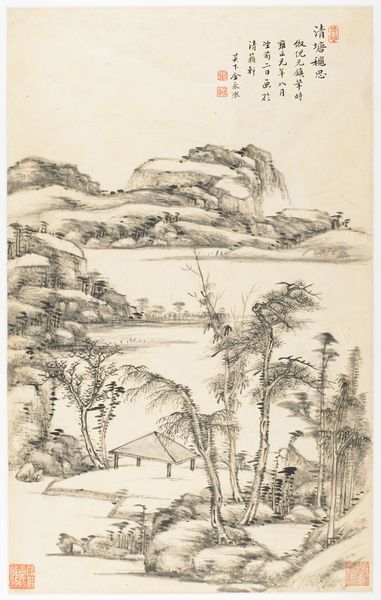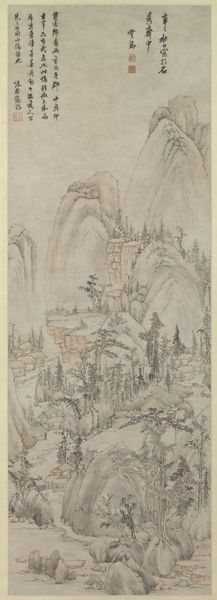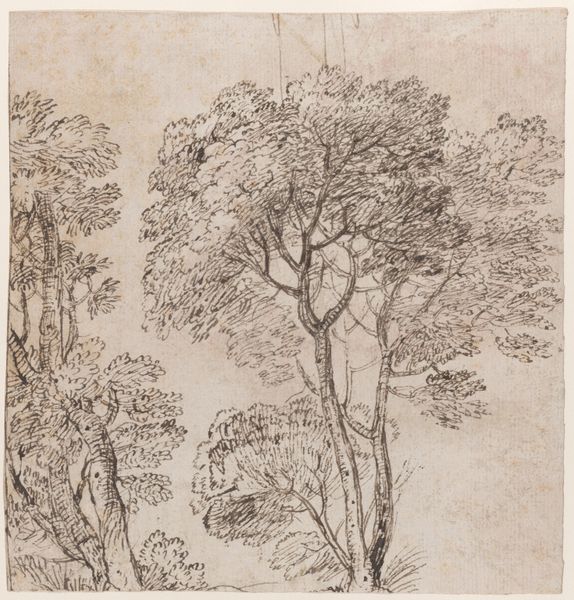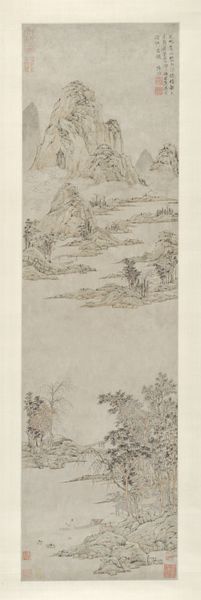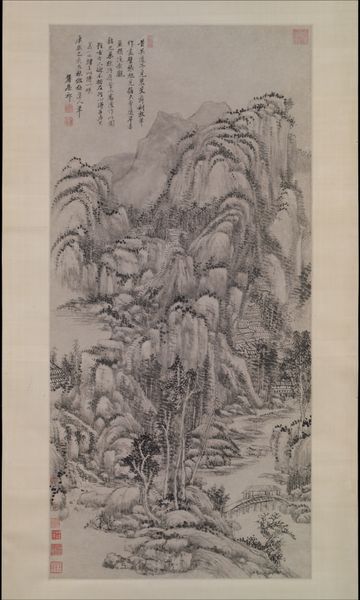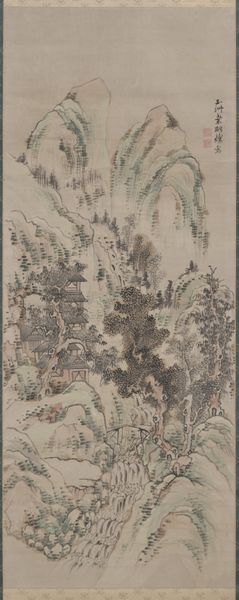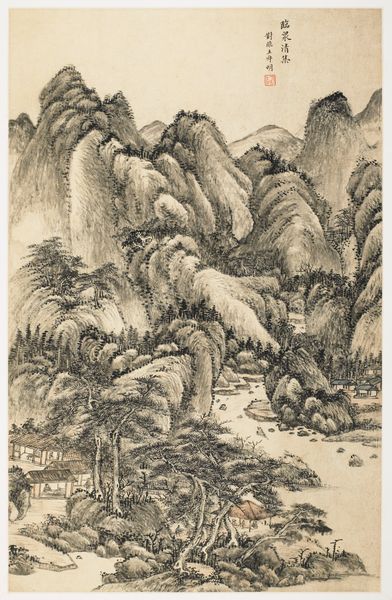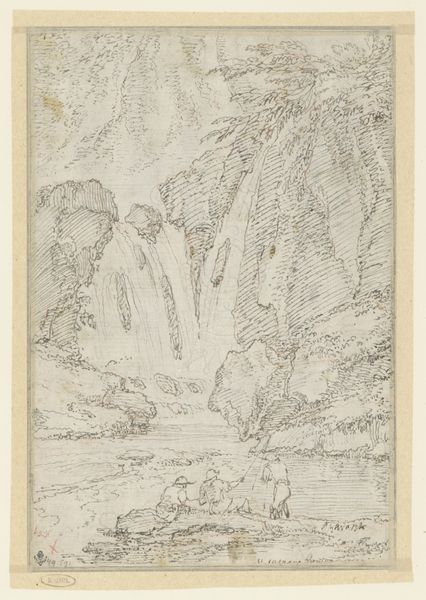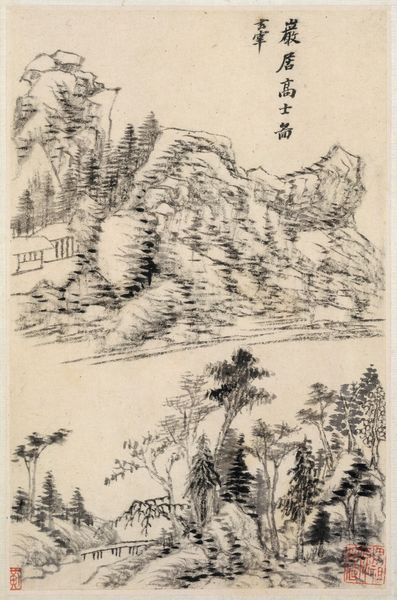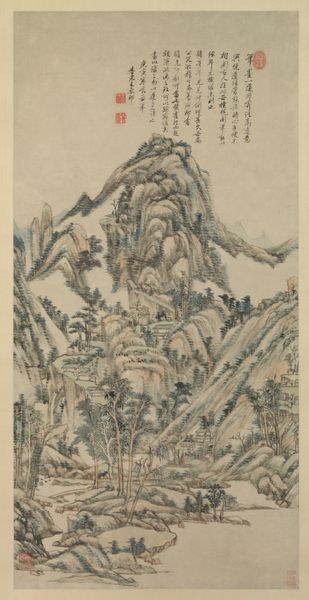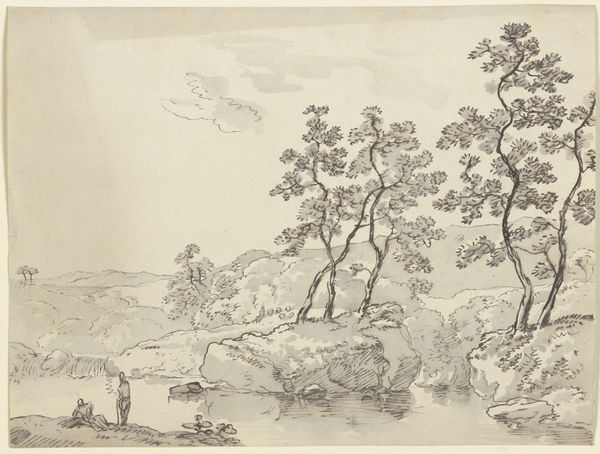
drawing, tempera, painting, ink
#
drawing
#
ink drawing
#
ink painting
#
tempera
#
painting
#
asian-art
#
landscape
#
form
#
ink
#
china
#
realism
Dimensions: 113 1/16 x 41 1/16 in. (287.18 x 104.3 cm) (image)146 1/4 x 51 in. (371.48 x 129.54 cm) (without roller)
Copyright: Public Domain
Curator: Standing before us is "Landscape with Scholar Viewing a Waterfall," an ink and tempera piece crafted around 1722 by Cai Jia. The artwork, a stunning example of Chinese landscape painting, currently resides at the Minneapolis Institute of Art. Editor: It strikes me as intensely contemplative. The delicate washes of ink create an almost dreamlike atmosphere, particularly with those monumental rock formations dwarfing the figure. There’s such tranquility amidst the powerful elements. Curator: Yes, the scholar’s placement within this landscape speaks volumes about humanity's relationship with nature, a central theme in traditional Chinese art. Cai Jia uses the ink medium to expertly showcase depth, texture and atmosphere across the three tiers of spatial recession here. The execution is amazing; from the way he rendered those complex, cascading forms to the careful distribution of washes! Editor: Absolutely! The waterfall itself acts as a potent symbol—perhaps of constant change or the unstoppable force of nature. Water is life, but also erosion; I see it used as a constant symbolic duality across Asian art and beyond. Also, the pine trees which can be seen in the central part have symbolic meaning of longevity, steadfastness. It makes one wonder: what kind of longevity do we seek and are we steadfast in doing so? Curator: Indeed! It's worth considering the labor invested in creating this work. The selection, grinding, and application of ink were meticulous processes that required great skill and patience. The high level of technical skill that Cai Jia exhibited speaks of deep training and probably high demand of painting like this back then, maybe even imperial or official patronage. Editor: The figure of the scholar has to have meaning too, and it is not a pure decorative placement. Isn't he a symbol for seeking wisdom within the natural world? The scholar often stands as a representation of cultivated understanding that links the personal microcosm to the larger universal forces at play. He is literally facing up and seeking wisdom and knowledge that cascades like a waterfall. Curator: Precisely. His deliberate positioning encourages us to interpret this painting as an invitation for mindful engagement with our environment, a notion I agree with wholeheartedly. What begins with appreciating the visual artistry soon reveals insights on living, working, and consuming. Editor: A powerful work – beautiful, thoughtful and technically accomplished. It urges a dialogue not just with art, but the self, and the forces that form the world. Curator: Agreed. An experience which will reshape any perspective of landscapes from this moment on.
